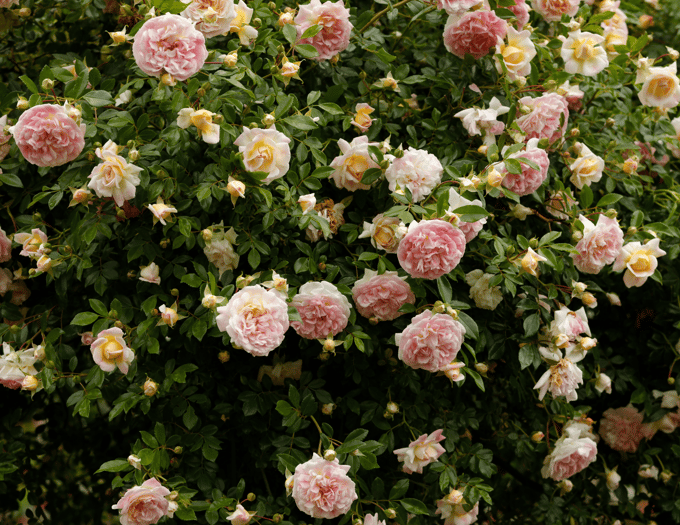
Updated: 2024
The ‘Queen of the Garden’, roses can be included in any space with full sun. All are easier to grow and enjoy when you keep these requirements in mind.
⚫ Vital Earth Ready Rose Mix— Use two bags per plant when starting in unamended soil.
⚫ Espoma Bio-tone Starter Plus— An organic soil bacteria jump-starter, food, & bio-stimulant for new soils. Excellent to start new beds or add to containers. Must contact roots.
⚫ Nature’s Creation Root Stimulator— Water all new plantings thoroughly with the solution and reapply at least once per month for the first 6 months to one year.
⚫ Vital Earth Cedar or Hardwood Mulch— Mulch cools & retains soil moisture, suppresses weeds, & breaks down slowly to provide additional organic matter. Maintain at least a 2-3” thick layer at all times, keeping mulch at least 2” away from the crown of the plant.
⚫ Espoma Rose-tone Fertilizer— An organic food made just for roses, apply in late winter and fall for most varieties, and add a summer feeding for re-blooming types.
⚫ Liquid Seaweed— An organic extract that aids in resistance to temperature fluctuations and disease, and also helps to prevent and deter spider mites. Use as a foliar spray or drench.
Some additional points to remember for success:
• Roses will always do their best in a full sun spot with good air circulation and soil drainage.
• For plastic containers, thoroughly soak new transplants in Root Stimulator. Remove from the container, and plant. Plants in paper fiber pots should be soaked, then have 2-3” long incisions made on 2-3 sides, with the bottom left intact. Plant, leaving the rose sitting at its original soil level or just slightly higher. Lastly, remove the top rim of the pot, and apply mulch.
• Always water deeply and thoroughly. Watering is best done at the soil level, and not done overhead. Healthy plants are the best defense against pests and disease.
• Rose varieties vary in their disease resistance. Be careful to keep rose foliage as dry as possible to minimize fungal problems, removing any diseased foliage promptly. If you do encounter fungal issues, use a fungicide according to package instructions.
• Pest problems can be treated as needed. Foliar sprays of Liquid Seaweed weekly in the morning can greatly help. See us for a diagnosis, and begin with the least toxic product.
• Most, but not all roses will need a hard pruning around Valentine’s Day to prepare for spring blossoms. For repeat bloomers, another pruning should be done in mid-August. These are good times to fertilize, add other amendments, re-mulch, and check overall health, as well.
Featured Image: Canva
